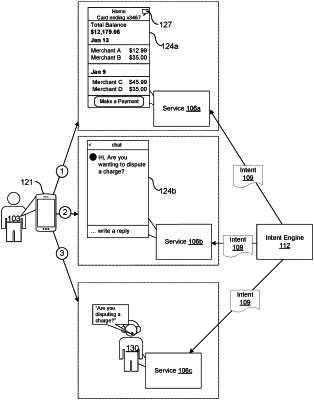| CPC H04L 65/403 (2013.01) | 20 Claims |

|
1. A system, comprising:
a computing device comprising a processor and a memory; and
machine-readable instructions stored in the memory that, when executed by the processor, cause the computing device to at least:
receive an intent request from a first service of a plurality of services, the intent request requesting a user intent associated with a user interacting with the first service;
collect interaction data from a plurality of services, the interaction data being associated with a plurality of user interactions with the plurality of services over a plurality of communication channels;
translate a first portion of the interaction data from a first format to a second format to comply with a predefined schema, the first format being associated with a first communication channel of the plurality of communication channels, the second format being required for a trained intent model;
translate a second portion of the interaction data from a third format to the second format to comply with the predefined schema, the third format being associated a second communication channel of the plurality of communication channels;
organize the interaction data according to the predefined schema;
apply the interaction data that is organized according to the predefined schema as an input in to the trained intent model;
determine the user intent of the user based at least in part on an output of the trained intent model; and
notify the plurality of services of the user intent, wherein subsequent user interactions with any one of the plurality of services are based at least in part on the user intent.
|